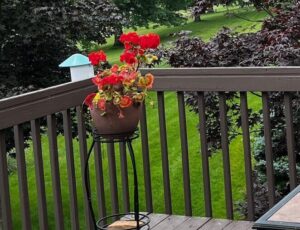Well, you found this wood table in an old garage. Wood; looks old, it’s in decent shape. Do you want it? How much do you want to pay?
For this discussion, I am going to concern myself mainly with North American Antiques. The Americans are relatively new countries, and while there may be people with handed down heirloom from Mayflower families; I am reasonably sure you will not encounter their wood pieces in an old barn.
What is it?
First, we can discuss what an antique is. In American as a country was born in 1776. So American made antiques started around late 1600. However, the settling of the Americans began in the 1500s. English pilgrims established the Jamestown colony in 1607, and Great Britain had indeed colonized American by 1650. HERE SEE
Initially, the American home had handmade furniture by the colonists or they brought furniture over on boats mainly from England and France. You may find a few old pieces from before the 1700s, but that only seems to happen on the Antique Roadshow.
Disclaimer Alert: I have to tell you that I am not a professional antique appraiser and I rely on the opinions of professional antique restorer and professional dealers. John is an antique restorer, but his expertise is in Irish and English furniture and antiques.
John tells me one of the first things he looks for in a piece of furniture is joinery: how the drawers and parts of the table come together. The next primary determinant is the style; what the piece looks like and finally the wood type used.
Generally, you will find the type of wood used helo dates apiece. Dr. Lori notes that you will find more Mahogany used in the 1700s, Walnut and Cherry in the 1800s and Oak and Rosewood in the 1900s
Keep it or?
Now that you have an idea of the age of the piece that you have. What do you do with it? Firstly, if it is an antique, do you know the value? You don’t want to paint something you might be able to resell for a significant profit. I think you should always try to get an appraisal of a possible antique piece before you alter it. Keep in mind, if the furniture is damaged and not easily refinished, you could probably just go ahead and paint the furniture but get that appraisal first. A basic Google or eBay search or an antique book search might be all you need to get a good idea.
Furthermore, heritage antiques: furniture from the sixteen and seventeen and possibly some eighteen hundred pieces should never be refinished. We are talking items worth in the four-figure range of $1,000.00 and higher. Never restore an old item before an appraisal. Restoration destroys the original patina and results in significant loss of value. This is why an assessment is so critical.
Can I Paint It?
Just because it may be an antique, that doesn’t mean that you can’t paint the furniture. In a very old French, Italian and even English home, you can find very old furniture that has been painted and repainted over centuries and is part of the decor of the house. I love the muted creams, blues and yellow in French county home and the varied colors found in Engish country homes. Here is find furniture in pale to vibrant Nature colors, green, rose, and yellow. The Italians always loved handpainted furniture some of it quite ornate, like the Baroque pieces found in Italy, but even today country home has painted murals and furniture.
In our own homes, you can see John and I both love the Antique look and dark furniture, but we still appreciate the lightness and decor painted furniture can bring to the room.
Admittedly, we do tend to keep the older pieces in the original wood or John might refinish and antique. And you know, we do not have any museum-quality furniture. The new items we find, I do paint, and even John has come to appreciate the freshness and warmth some painted furniture can bring into a home. The days of all brown furniture are over for now.
Some of the more common periods of furniture we find are pictured below: An American Empire, Victorian, and Arts and Craft items:
My Victorian table
My Eastlake Oak carved polar table 1870 to 1880
My 1920 Empire Mahogany Games Table with Lyre Base and Swivel Top- a four-figure antique
A Gentleman’s Travel Chest- Ours is a reproduction for the originals Georgeon chest of the late 1700 early 1800- an original work two to three thousand; ours a few hundred. The dovetails were the giveaway- machined
I hope this was helpful. I will expand on painted furniture paints and techniques we used and newer products I’ve found in a later post.
Thanks for visiting. What do you think about the information? Do you love painted furniture? Leave me your thoughts in the comments section at the end..I’d love to hear from you.
Talk soon- Take good care
Dee
Meanwhile, below is a great informative piece on American Furniture:
The Spruce has a wonderful article on the twelve styles of American Furniture written by craftsmen and writer Chris Baylor






